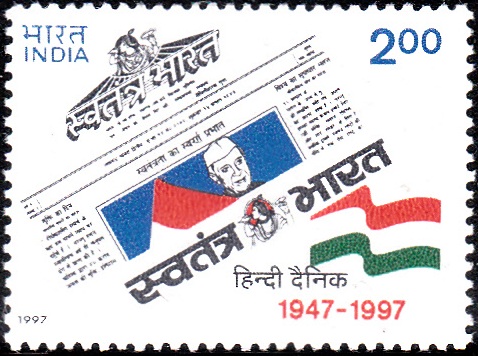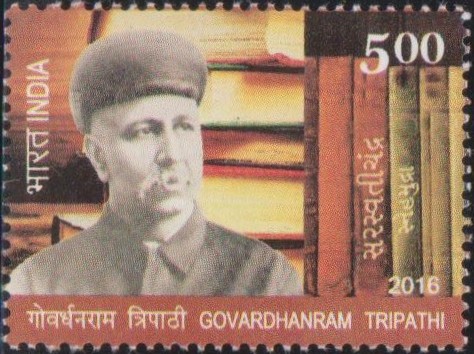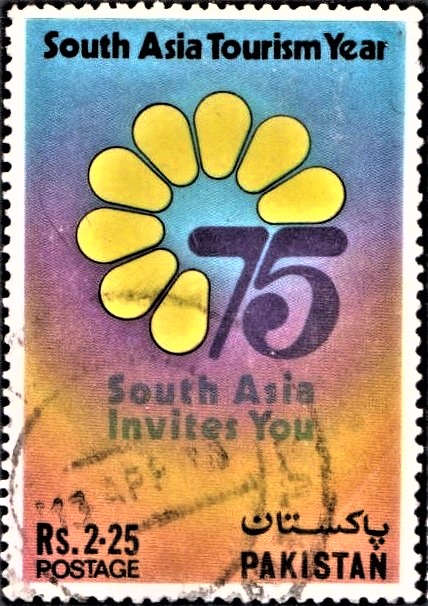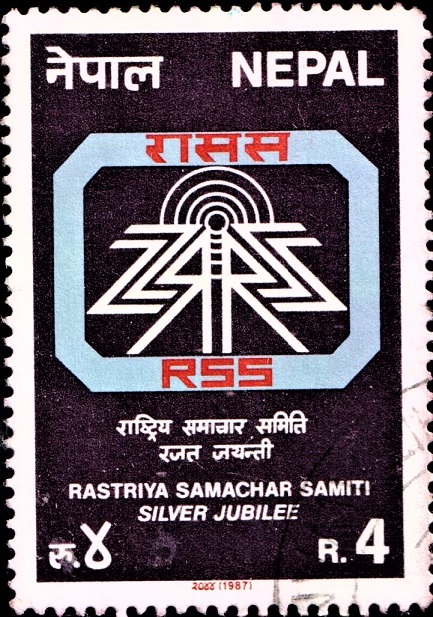
Mumbai Samachar
A commemorative postage stamp on the 200th year of publication of Bombay Samachar, the oldest existing newspaper in Asia :

Issued by India
Issued on Jun 14, 2022
Issued for : Department of Posts is pleased to issue a Commemorative Postage Stamp on completion of 200 years of publication of Mumbai Samachar.
Credits :
Stamp/FDC/Brochure/Cancellation Cachet : Ms. Gulistaan
Type : Stamp, Mint Condition
Colour : Multi Colour
Denomination : 500 Paise
Stamps Printed : 301600
Printing Process : Wet Offset
Printer : Security Printing Press, Hyderabad
About :
- Newspapers are an essential part of modern civilization. They inform us about the latest developments that are taking place in the world. They also guide us and mould public opinion on issues of national and international importance. Newspapers provide space for public grievances and educate citizens on good citizenship and ethics.
- Mumbai Samachar is Asia’s oldest existing newspaper. First published on 1st July, 1822, the headquarter of this Gujarati newspaper was visited by Mahatma Gandhi and Sardar Vallabhbhai Patel for discussion on important issues. On 1st July, 2021, the newspaper has entered in the 200th year of publication.
- Mumbai Samachar started as a small bunch of pamphlets on 1st July, 1822, by Parsi priest-cum-scholar, Fardunjee Murazban, considered as the pioneer of Gujarati journalism, as he started the first Indian printing press in 1812. The first version of the newspaper had consisted of 14-pages on three small quarto sheets and a half-sheet supplement in a 10 by 8 inch format.
- Mumbai Samachar in its initial phase catered to the thriving business community of the city and provided business-related news, death announcements, and especially shipping time-tables as all trade was conducted through the Bombay port. A week till 1832, a bi-weekly till 1855, and then on to a full-fledged daily, the newspaper became a favourite of the Gujarati community comprising Paris, Hindus, Jain, Dawoodi Bohras, Khojas and Memons, etc.
- Over the years, while faithfully catering to the business community, “Mumbai Samachar” witnessed history as the Seven Isles known as Bombay transformed into Mumbai, the country’s financial-glamour power capital. The Camas, who acquired it in 1933, continued the paper’s strongly “nationalistic” editorial policies which endeared itself to the stalwarts of the freedom movement.
- With a daily circulation of barely 15,000 copies in the 1930s, now it sells at least 10 times more. After Asia’s first bourse, the Bombay Stock Exchange (BSE) started working in 1875, the “Mumbai Samachar” provided well-researched daily reports on the ups-and-downs till the 1990s Mumbai Samachar was eagerly lapped up by the investor community. Ms. Pinki Dalal became the first ever women editor for Gujarati Daily.
- Currently more than 200 staff members and offices across four other centres apart from Mumbai, bring out a single daily edition of the paper, making it the oldest running newspaper in India. It has survived two World Wars, the fight against colonialism, global financial slumps and now the pandemic covid-19.
- Mumbai Samachar has successfully overcome the brunt of digital media due to its credibility and adherence to its original values. Even today, authenticity of the news is the first priority of the newspaper. It continuously provides vast informative and educational material through its daily supplements. The newspaper has taken a number of initiatives to promote Gujarati language, literature and tradition. The daily has also mentored many young journalists who are doing very well in the field of Gujarati and regional language journalism.
- Text : Referenced from the contents provided by proponent.
Subscribe
Login
0 Comments







